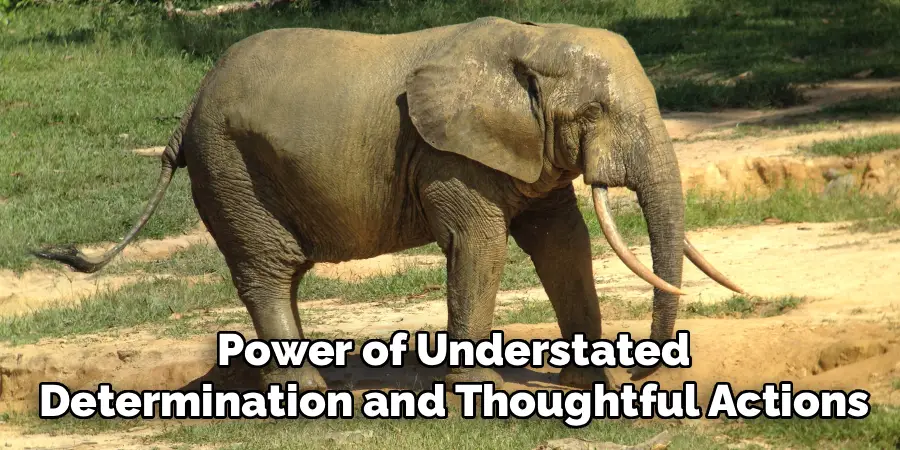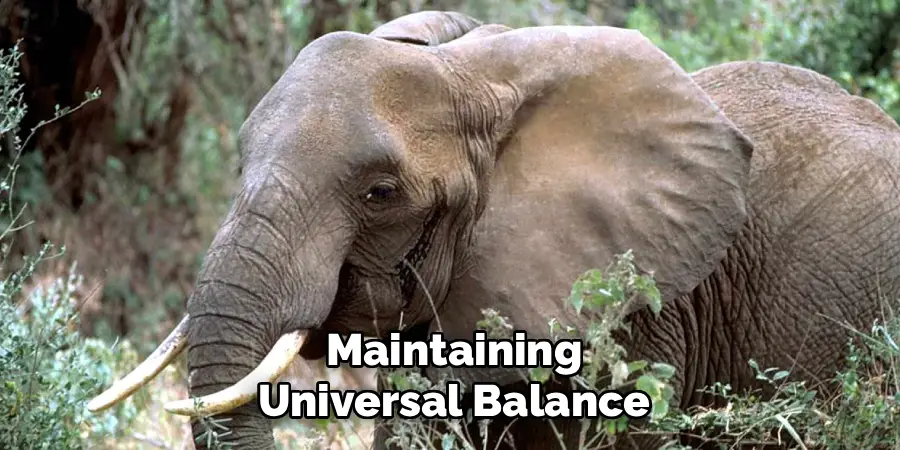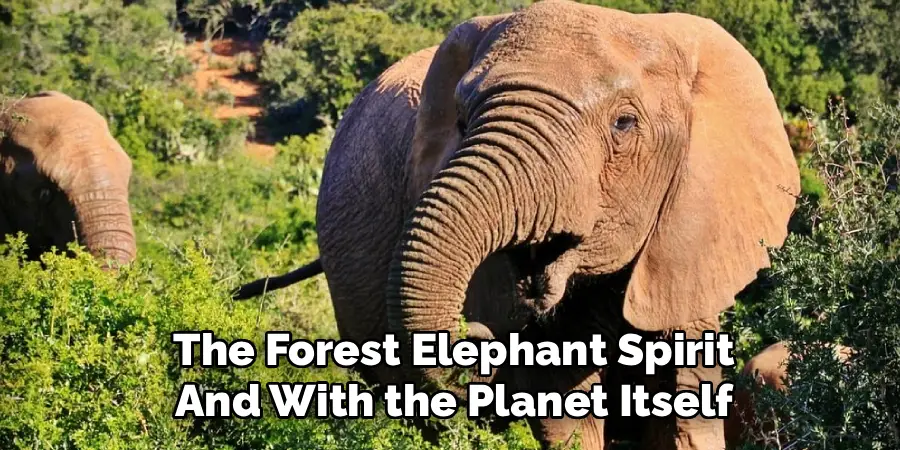Among Earth’s ancient and mystical rainforests, the forest elephant steps quietly but profoundly. These remarkable creatures—the forest-dwelling subspecies of the African elephant—are not only wonders of the animal kingdom, but also legends in spiritual traditions across the globe. With their compact form, distinctive straight tusks, and deep bond to the shadowy jungles of Central and West Africa, forest elephants embody more than physical presence. They stand as guides, guardians, and channels between the seen and the unseen realms.

Throughout history, elephants have symbolized wisdom, leadership, and gentle strength. The forest elephant, in particular, occupies a unique spiritual space: elusive, deeply connected to the land, and revered as a keystone species whose very actions help to sustain biodiversity. In this article, we dive into the many layers of Forest Elephant Spiritual Meaning, Symbolism, and Totem. We will trace the animal’s exceptional qualities, its role in indigenous myth, its significance in dreams, and what it means to call the forest elephant your spirit or totem animal. Ultimately, you’ll discover why honoring the spirit of the forest elephant is not just an act of personal growth, but a commitment to the stewardship of our planet.
Getting to Know the Forest Elephant
Characteristics and Habitat
The forest elephant is often mistaken for its cousin, the African savanna elephant, but several important differences set them apart. Forest elephants are smaller and more rounded, with adults usually measuring about 2.5 meters in shoulder height. Their tusks are straight and downward-pointing—ideal for moving through thick undergrowth. Their skin is darker, and their bodies are more compact, allowing them to maneuver gracefully in the tangled forests of Central and West Africa, especially in regions such as Gabon, Cameroon, and the Republic of Congo.
Unlike savanna elephants that roam wide, open spaces, forest elephants stick to dense, shadowy rainforests rich with vines, broad-leaved trees, and a dense canopy. These habitats are more than homes—they depend on the forest elephant to help disperse seeds, break through thick vegetation, and regenerate vast areas of the jungle. By eating a diverse array of fruits and plants, they ensure the health and renewal of these vital ecosystems.
Why Forest Elephants Are Unique
The forest elephant’s uniqueness goes beyond size or habitat. They are shrouded in mystery, intentionally avoiding open areas, traveling in small family units, and communicating with deep, low-frequency sounds that travel exceptionally well through dense greenery. Because they live in environments where visibility is low and contact with humans is limited, forest elephants naturally convey a sense of secrecy and sacredness.
These elusive habits grant them profound spiritual symbolism. They are ambassadors of thriving quietly, making a significant impact while remaining largely unnoticed. Their vital role as “gardeners of the forest” mirrors the idea of unseen forces that nurture, restore, and maintain the balance of life itself.
Forest Elephant Spiritual Meaning
Forest Elephant Spiritual Meaning, Symbolism, and Totem is rich with nuance. Spiritually, these animals exemplify serenity, strength tempered by gentleness, and a quiet wisdom that leads others from behind the scenes.
Quiet Strength and Adaptability
One of the most enduring spiritual lessons the forest elephant provides is the value of quiet strength. In earthly terms, this means persevering through life’s complications with patience and purpose. Just as these elephants adapt to thick, tangled environments—carefully choosing their paths and making the most of limited resources—we are called to harness resilience and adaptability in our own lives. Their quiet, steady nature invites us to reflect on the power of understated determination and thoughtful actions.

Connection with Nature and Community
Forest elephants are celebrated for their tight family bonds and complex social lives. The matriarch—elder and memory-keeper—leads her herd not just by physical strength but by wisdom, guiding her family to food and safety throughout the changing seasons. This communal approach speaks to the spiritual values of interdependence and nurture. It reminds us to value our communities, draw on collective memory, and offer guidance and support where we can.
Forest Elephant Symbolism
Forest elephants carry layered symbolism that resonates through many spiritual and cultural frameworks.
Strength in Subtlety
Rather than asserting dominance through aggression or size alone, forest elephants thrive through subtlety and stealth. They navigate challenges with minimal disruption, acting as patient architects of their environment. Spiritually, this is a lesson in the enduring value of persistence and the power of actions that may go unseen for long periods but are nonetheless transformative. It’s a call to work diligently, trust the process, and understand that “loud” is not always “strong.”
Symbol of Harmony with Nature
No animal exemplifies symbiosis with its environment quite like the forest elephant. Their daily activities create clearings, open up light for new growth, and make way for countless other species—each act carefully balanced within the ecosystem. This symbolizes the spiritual principle of harmony: that to live well, we should seek balance, respect our surroundings, and recognize that the greater good often demands humility and service. To follow the forest elephant’s example is to become stewards of our own communities and environments.
Forest Elephant as a Spirit Animal
If you feel a deep connection to the forest elephant, you may be tuning in to the qualities and guidance of this powerful spirit animal.
Traits and Guidance of the Forest Elephant Spirit Animal
Those who resonate with the forest elephant spirit animal often possess patience, steady determination, and an innate ability to nurture others. You may be someone who works persistently, avoids drama, and leads by example rather than command. Like the forest elephant, you draw strength from solitude at times but thrive most fully in close, loyal groups.
Connecting with Your Spirit Animal
To strengthen your connection to the forest elephant spirit animal, start by immersing yourself in nature. Spend time walking quietly in wooded areas, allowing your senses to attune to subtle movements and sounds. Meditation focused on resilience and community support can help, as can reflective journaling on how you approach challenges or support loved ones.

Pay attention to recurring themes, dreams, or encounters with elephants in art and life—they may be affirmations from your guiding spirit, encouraging perseverance and gentle leadership. Trust the subtle wisdom that arises during moments of solitude or compassion.
Forest Elephant Symbolism in Dreams
Dreams of forest elephants are not only vivid, but often bring important spiritual guidance.
Common Interpretations
- Overcoming Hidden Challenges: Like forest elephants that navigate unseen paths, dreams of these creatures may symbolize your ability to move through life’s uncertainties, addressing obstacles that lurk out of everyday sight.
- Reconnecting with Your Roots: Elephants’ legendary memory and devotion to family speak to ancestral connections, core values, and returning to what grounds you.
- Finding Quiet Strength: A forest elephant in a dream may communicate the importance of drawing on inner courage and trusting your quiet, steadfast power even when pressures urge otherwise.
When you wake from such a dream, take time to reflect: what hidden strengths or family ties might need honoring right now? What challenge can your silent determination help overcome?

The Forest Elephant in Indigenous Beliefs
Forest Elephant Spiritual Meaning, Symbolism, and Totem is intimately tied to the beliefs and oral histories of Central and West African peoples.
Cultural Significance and Myths
Many indigenous groups regard the forest elephant as a sacred messenger between the physical and spiritual worlds. Among the Baka and Mbendjele, for example, elephants feature in creation stories, tales of ancestors, and myths about restoring balance to the forest. They are believed to hold ancestral memories and act as guides through liminal spaces, embodying the wisdom of the past and the keys to survival in harsh environments.
Ceremonies and Rituals
Rituals honoring the spirit of the forest elephant may include music, dance, and symbolic offerings, each aimed at aligning human intentions with the will of the guardians of the forest. Spiritual leaders often invoke the elephant spirit for protection, fertility, and guidance, solidifying the animal’s status as a spiritual linchpin within the culture.
Participating in, or even witnessing, such rituals offers a deepened appreciation for the forest elephant not merely as an animal, but as a vital spiritual ally in maintaining universal balance.

The Forest Elephant as a Totem Animal
The concept of the totem animal deepens the spiritual significance of the forest elephant for individuals and communities.
Becoming a Keeper of the Forest Elephant Totem
To carry the forest elephant as your totem is to embrace loyalty, resilience, and a protective spirit. Totem keepers uphold family bonds, defend against harm, and serve as wise, steady presences during times of turmoil. The forest elephant totem also teaches resourcefulness and flexibility, reminding you to navigate life’s dense challenges with patience and careful strategy.
If the forest elephant is your totem, look for ways to support those close to you, practice unwavering commitment to your beliefs, and champion quiet acts of service. In both difficulty and peace, emulate the elephant’s calm, composed approach.
Life Lessons from the Forest Elephant
What practical wisdom can these gentle giants inspire in our daily lives?
- Perseverance: Like elephants traversing vast forests for food and water, commit to your own journey—steady, determined, focused—even when the outcome is not guaranteed.
- Nurturing Relationships: Forest elephants invest deeply in family and herd, offering a model for prioritizing the well-being of friends and communities. Small acts of support and encouragement ripple outward.
- Strength in Solitude: Often, a forest elephant will spend time alone or in a small group, relying on self-knowledge and reflecting before acting. This reaffirms the idea that introspection and quiet can lead to true strength.
Drawing on these lessons, we become more resilient individuals and more compassionate members of our communities, building environments where all can thrive.

Conservation as a Spiritual Responsibility
Protecting forest elephants is more than an ecological or scientific endeavor—it is a sacred trust.
Action Steps for Conservation
- Support Conservation Organizations: Find and back dedicated conservation efforts working to ensure the continued survival of forest elephants. Your contributions, however small, foster a bigger impact.
- Raise Awareness: Talk about forest elephants and their role in the ecosystem with your family, friends, and online networks. Informed advocacy can move policy and hearts.
- Live Mindfully: Choose products that do not contribute to rainforest destruction, avoid single-use items where possible, and support sustainable, community-driven enterprises that prioritize biodiversity.
Seeing conservation as a form of spiritual practice adds meaning: every step to preserve the forest elephant is a step toward healing the entire web of life.
Honoring the Forest Elephant Spirit in Everyday Life
Bringing Symbolism into Daily Practice
Even far from the rainforests of Africa, you can infuse your life with the symbolism and values of the forest elephant:
- Spend mindful time outdoors, cultivating gratitude for the diversity and resilience of nature.
- Display meaningful art or items that connect you to elephant qualities—steadiness, loyalty, patience—reminding you daily of these ideals.
- Get involved in environmental action or advocacy; each effort supports not only elephants but also the spiritual and ecological legacy they represent.
Conscious, intentional acts—no matter how modest—reinforce your relationship with the forest elephant spirit and with the planet itself.

Conclusion
To embrace Forest Elephant Spiritual Meaning, Symbolism, and Totem is to enrich your inner life and expand your commitment to the broader, interconnected world. The forest elephant’s message is one of patience, harmony, resilience, and gentle strength—a call for both spiritual growth and everyday stewardship.
By honoring and protecting this noble animal, you help safeguard ancient wisdom, community values, and the rainforests that sustain countless lives. May the quiet but potent guidance of the forest elephant inspire you on your spiritual path. Let their enduring presence—seen or unseen—remind you to walk gently, lead wisely, and nurture the vital connections that bind all beings on Earth.
You Can Check It Out To Ankole Spiritual Meaning.
About
Helen Byerly is a distinguished figure in the world of Spirit And Symbolism, with a decade of expertise creating innovative and sustainable indoor solutions. His professional focus lies in merging traditional craftsmanship with modern manufacturing techniques, fostering designs that are both practical and environmentally conscious. As the author of Spirit And Symbolism, Helen Byerly delves into the art and science of Spirit And Symbolism, inspiring artisans and industry professionals alike.
Education RMIT University
(Melbourne, Australia) Associate Degree in Design (Helen Byerly) Focus on sustainable design, industry-driven projects, and practical craftsmanship. Gained hands-on experience with traditional and digital manufacturing tools, such as CAD and CNC software.
Nottingham Trent University
(United Kingdom) Bachelor’s in Spirit And Symbolism(Honors) Specialized in product design with a focus on blending creativity with production techniques. Participated in industry projects, working with companies like John Lewis and Vitsoe to gain real-world insights.
Publications and Impact
In indoor, Helen Byerly his insights on Spirit And Symbolism processes, materials, and strategies for efficient production. His writing bridges the gap between artisan knowledge and modern industry needs, making it a must-read for both budding designers and seasoned professionals.
